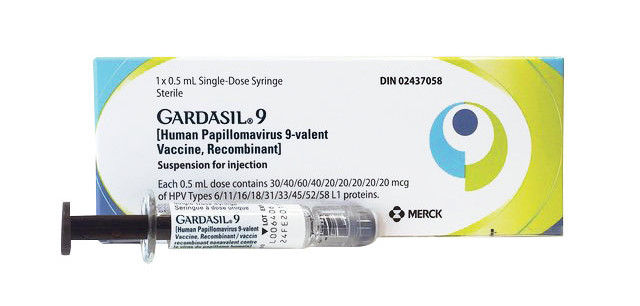A woefully low proportion of U.S. adolescents are completing the two-part human papillomavirus (HPV) vaccine according to the recommended schedule, Healio reports.
U.S. guidelines recommend that both male and female adolescents receive the HPV vaccine, which prevents multiple strains of the virus that are associated with various cancers, when they are 11 or 12 years old.
Publishing their findings in the Journal of Infectious Diseases, researchers from Emory University in Atlanta analyzed responses from the 2016 National Immunization Survey-Teen. This is a random digital-dial phone survey of parents of 13- to 17-year-olds. The investigators included data from 20,475 parents who agreed to provide permission for verification of immunization records from their children’s medical providers.
Of the children of the respondents, 51.1 percent were male, 19.5 percent were 13 years old, 20 percent were 14 years old, 21 percent were 15 years old, 20.4 percent were 16 years old and 19.1 percent were 17 years old; 52.7 percent were white, 23.2 percent were Latino and 13.8 percent were Black; 22.6 percent were below the poverty line. Less than 1 percent (0.2 percent) had no medical provider, 59.1 percent had one provider, 26.1 percent had two providers and 14.6 percent had three or more providers.
A total of 15.8 percent of the adolescents had completed the HPV vaccination schedule before their 13thbirthday and 34.8 percent had been vaccinated by the time they reached age 15. A total of 23.6 percent started the vaccination schedule after turning 13 years old, and 7 percent started after turning 15.
These figures do represent improvements from previous years.
The rate of vaccine completion by age 13 was 20.1 percent among girls and 11.6 percent among boys, rates that increased to a respective 41.6 percent and 28.3 percent for completion by 15 years old.
Vaccination rates among the children of respondents were higher among Latinos compared with those of other racial/ethnic groups and higher among those living below the poverty line compared with those living above the poverty line. Compared with those with one health care provider, adolescents who had more than one provider were more likely not to have started the HPV vaccination schedule and were less likely to have completed the schedule before both age 13 and age 15.
To read the Healio article, click here.
To read the study, click here.







Comments
Comments